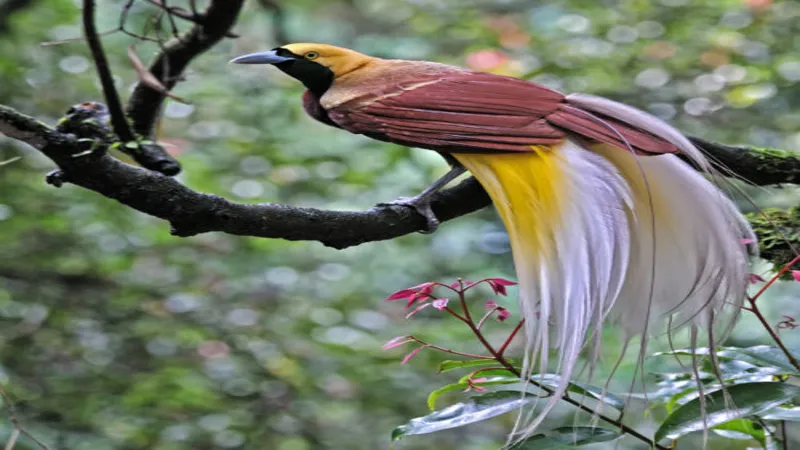
Birds of Paradise: Bioluminescent Beauty in Nature
Deep within the lush forests of Papua New Guinea, Indonesia, and Eastern Australia, a captivating spectacle unfolds among the dazzling birds of paradise, known for their extravagant feathers and striking displays. These avian wonders not only flaunt their vibrant plumage in elaborate courtship rituals but also exhibit a remarkable trait previously unexplored: biofluorescence. Recent research led by biologist Rene Martin has unveiled that many of these birds possess feathers that glow in the dark, enhancing their allure and possibly redefining avian communication. As we delve into this fascinating phenomenon, we uncover the intricate interplay between light, color, and the vibrant lives of these extraordinary creatures.
| Attribute | Details |
|---|---|
| Location | Forests of Papua New Guinea, Indonesia, and Eastern Australia |
| Key Feature | Flamboyant feathers and unique ornaments |
| Biofluorescence | 37 of 45 species exhibit biofluorescent feathers, glowing in the dark |
| Research Insight | Study by Rene Martin revealed the role of glowing feathers in mating displays |
| Mating Displays | Males use bright fluorescent feathers to attract females |
| Fluorescence Mechanism | Absorbs UV and re-emits as longer wavelengths (greens, yellows, etc.) |
| Sexual Dimorphism | Males and females have distinctly different appearances; males are more colorful |
| Habitat Influence | Fluorescence varies with light exposure in different habitats |
| Behavioral Adaptation | Males enhance visibility by moving to well-lit areas |
| Western Parotia Display | Clears space on forest floor to highlight plumage during mating |
| Super Black Feathers | Create contrast with fluorescent colors, enhance visibility |
| Broader Implications | Biofluorescence might be common among birds, more research needed |
| Potential Candidates | Moluccan cockatoo may also exhibit biofluorescence |
The Enigmatic Birds of Paradise
Birds of paradise are fascinating creatures found in the lush forests of Papua New Guinea, Indonesia, and Eastern Australia. Known for their stunningly colorful feathers and unique shapes, these birds are like nature’s own fashion models. Their vibrant plumage is not just for show; it plays a crucial role in attracting mates. During mating season, male birds of paradise put on dazzling displays to impress females, showcasing their beautiful feathers in a mesmerizing performance.
What truly sets birds of paradise apart is their incredible biofluorescence, a phenomenon that allows them to glow in the dark. This unique feature is rare among birds, making these species even more extraordinary. Scientists, like biologist Rene Martin, have discovered that a significant number of these birds possess glowing feathers. The glow adds an extra layer to their courtship rituals, making their displays even more captivating and helping them stand out in the dim light of the forest.
Frequently Asked Questions
What are birds of paradise known for?
Birds of paradise are famous for their flashy feathers and unique shapes, making them stand out among other birds in their habitats.
Where can birds of paradise be found?
These stunning birds are primarily found in the forests of Papua New Guinea, Indonesia, and Eastern Australia.
What is biofluorescence in birds of paradise?
Biofluorescence is when birds absorb ultraviolet light and re-emit it as visible light, making their feathers glow, especially during mating displays.
How many species of birds of paradise exhibit biofluorescence?
Out of 45 recognized species, 37 have been found to exhibit biofluorescent feathers, mainly in males.
Why do male birds of paradise display fluorescent feathers?
Males use bright, glowing feathers to attract mates and communicate with other birds, enhancing their chances of reproduction.
What role does habitat play in bird fluorescence?
The amount of light filtering through foliage affects fluorescence visibility; open areas enhance it, while shaded spots can provide camouflage.
Could biofluorescence be common in other bird species?
Researchers suggest that biofluorescence might be more widespread in birds than previously thought, with several species possibly possessing glowing features.
Summary
Birds of paradise, found in Papua New Guinea, Indonesia, and Eastern Australia, are famous for their stunning feathers and unique shapes. Recent research by biologist Rene Martin revealed that many of these birds not only display bright colors for mating but also have feathers that glow in the dark. Out of 45 species studied, 37 showed biofluorescence, with males exhibiting the most vibrant colors. This glowing feature likely helps them attract mates and communicate. The research suggests that biofluorescence may be more common in birds than previously thought, indicating a fascinating area for future studies.